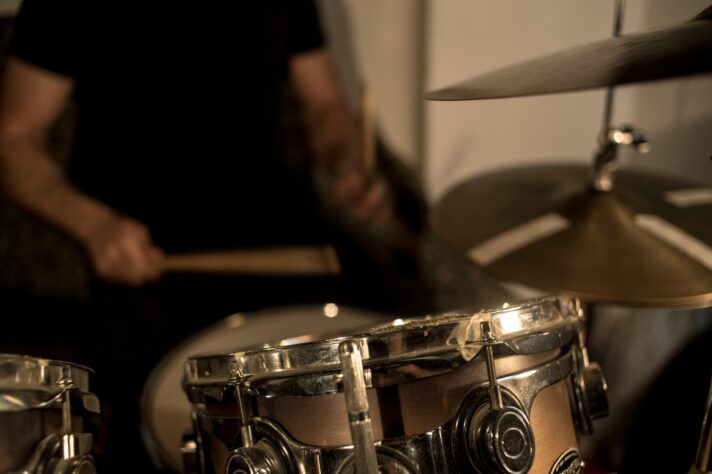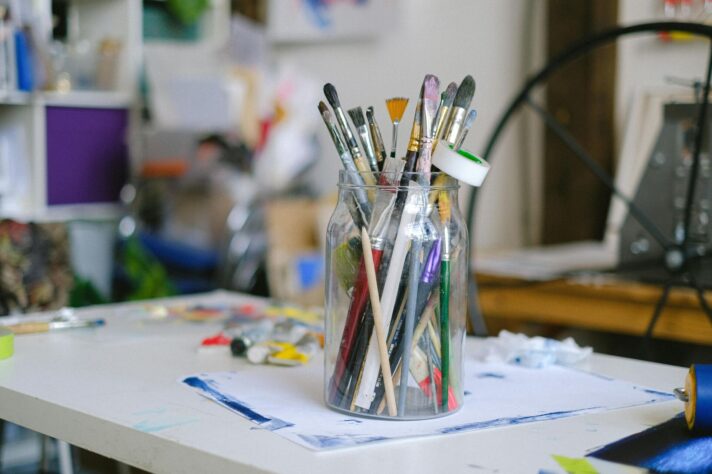If you don’t want to hire a cross-country moving company to help you tackle this task, you should learn What is the easiest way to pack when moving, How do you pack dishes for shipping, and How do you pack dishes without papers, long before you get to boxing everything up. To help you speed up the process, we made a guide with some useful tips and tricks that can help you do a good job of protecting breakable items.
The Ultimate Guide on How to Pack Plates for Moving
Whoever lost a favorite mug or any other valuable tableware during the move can tell the importance of keeping breakables properly wrapped and protected. That’s why learning how to pack plates for moving is an essential part of every DIY relocation. When you master it, handling other delicate objects will be a piece of cake.


What Supplies Do You Need When Packing Plates for Moving Cross-Country
Long before you start boxing everything up, you should consider decluttering. Donating furniture and tableware you don’t need nor want will significantly lower the costs of materials, and it will speed up the boxing up process. When you are done with decluttering, it will be easy to tell just how many supplies you should get. Keep in mind that when you figure out how to box up books you don’t instantly know how to pack dishes for relocation. This is one of the most common relocation mistakes people make, and it can lead to some misfortunes during the relocation process.
To avoid relocation stress that comes with worrying too much about your belongings, before you start boxing everything up, obtain different packing materials:
- Packing paper for relocation is an excellent padding supply that will absorb some of the vibrations during the move and, in the process, protect your stuff.
- Bubble wrap is one of the most used materials. When you figure out how to use bubble wrap, you will see that it can protect many different objects in your house.
- Boxes of different sizes but mainly medium-sized ones because they will be easy to fill with padding supplies, and they will fit most of the tableware.
- Duct tape will keep everything inside the containers, so when you are buying, get the wider ones.
- Labels and markers in more than a few colors will help you with the organization, and they will make unpacking after the move that much easier.
Should You Get a Dish Box Before Contacting Cross-Country Moving Companies?
There are many packing materials for relocation that will keep your items safe during transport, but when you are trying to figure out how to pack kitchen items for the move, consider getting a few dish boxes. They are not only stronger and thicker than regular crates but also have a design to hold tableware and other delicate objects. Furthermore, these are the best-sized boxes for your tableware, and their extra padding helps to absorb waves and shocks during transport.
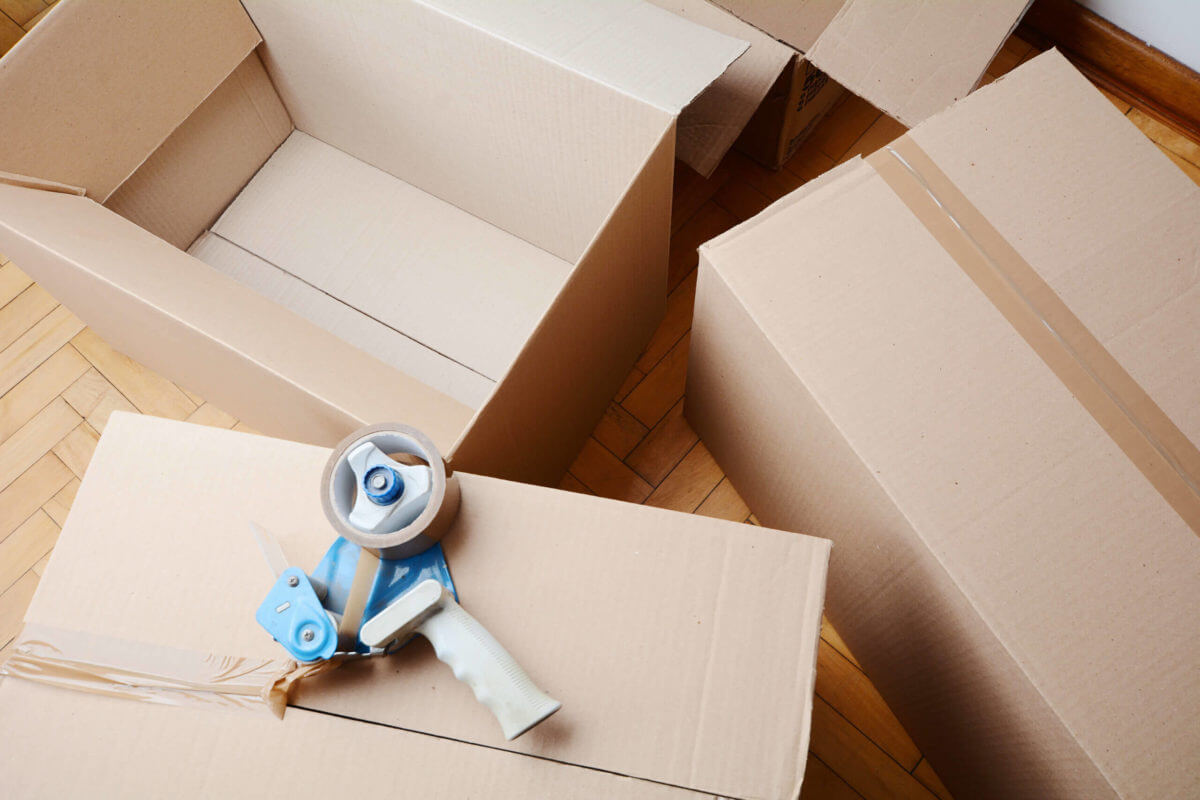

What Are the General Steps in Boxing up Fragile Items?
While thinking about moving interstate, have you wondered How do you pack dishes for shipping? Or even What is the easiest way to pack when moving? Handling tableware has some of the same steps no matter what you are boxing up. That’s why when you figure out how to pack glassware for relocation and how to box up silverware, you will know how to handle plates as well.
What Are the General Steps in Preparing Plates for Moving Cross-Country?
One of the best relocation hacks that will speed up the whole process is handling delicate objects using more than a few general packing steps. There are a few steps that will help you successfully tackle this task:
- Step one is assembling boxes and taping them on the bottom. This is something you shouldn’t forget to do because containers can get heavy, and you don’t want them to open while being loaded onto the truck.
- Apply crumpled paper to create cushioning at the bottom.
- Lay the paper on a flat surface and wrap the dish in it according to its specific needs. Then secure it with the tape and put it in the crate.
- When you put all the objects in the crate, don’t forget about filling the empty space between the container walls.
These steps seem straightforward, but keep in mind that you will be handling some very delicate objects, so don’t skip any part of the process. The easiest way to pack when moving is to make sure you protect everything. If you want to avoid falling into relocation depression due to losing a family heirloom or precious, irreplaceable object, consider hiring long-distance movers to handle your stuff. Some highly reputable companies offer additional relocation services like custom crating besides transporting your stuff from one place to another. They can also offer an insurance policy that can cover all the damage that happens to your belongings during the move.
Check Out the Video About Preparing Fragile Items for Shipping With Long Distance Movers
Following the general guidelines about protecting your belongings, you will be able to wrap any of your objects. However, if you are not sure you have done it correctly, check out the video below to see how professionals do it.
How to Pack Plates for Moving a Step by Step Guide
Are you wondering How do I pack my china plates for moving or any other less fancy dishes? To avoid losing some of the favorite dinnerware, take every precaution step during the packing process. This means that you should take advantage of all available materials for wrapping and padding as well as high quality, thick crates.
Plates are heavy yet delicate objects so take your time wrapping one by one before putting them in containers. Lay the paper on the hard surface, and then put the plate in the middle. Take corners of the paper to the center of the dish, then apply the tape to secure it. When the objects are bundled properly, stack them in the boxes vertically. This is by far the best way to pack plates. Furthermore, stacked this way, they are less likely to crack or break during the move.
Try not to overfill the containers, and before you want to close them, make sure you used padding material to fill the empty space around the bundled objects. For this, you can use peanuts or paper once again. When you are done, apply the tape to close the container and then take labels and markers to appropriately mark the box. Also, write in big, bold letters “FRAGILE”, on at least two sides so that movers or friends helping you know they should handle the crates with extra care.
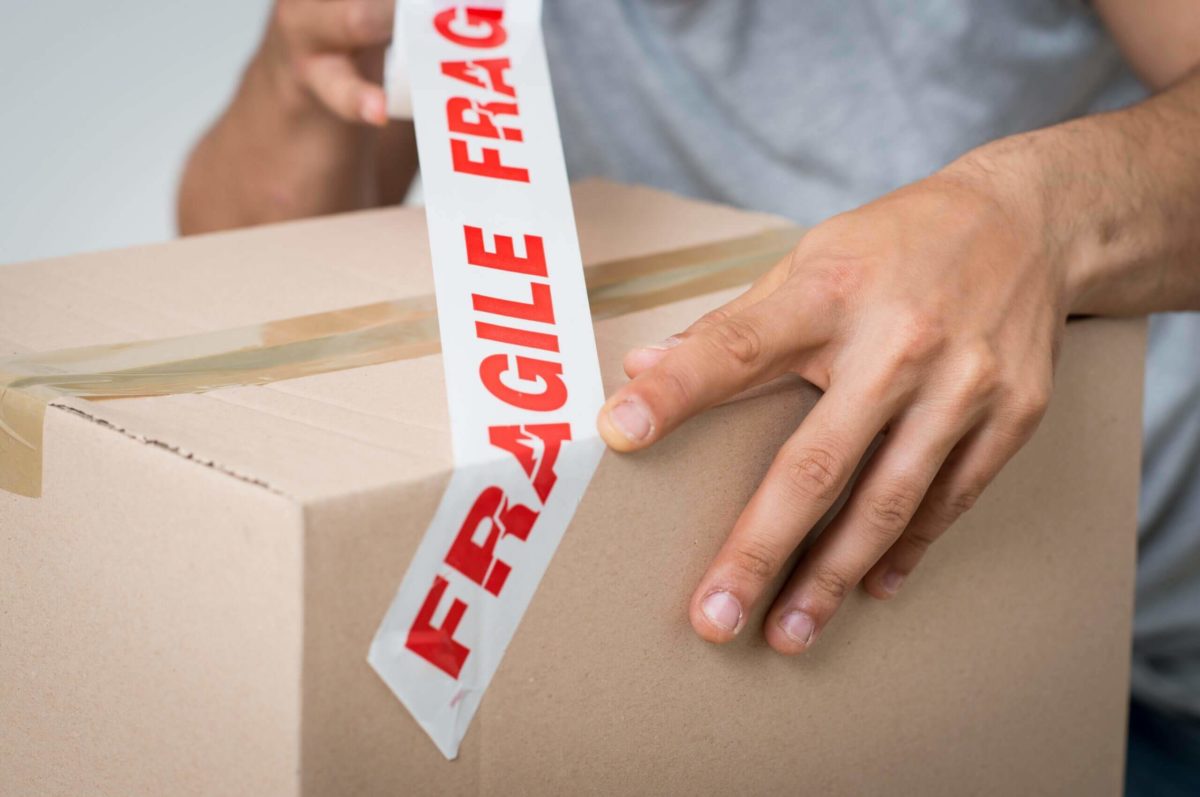

How Do You Pack Dishes Without Papers – The Best Way to Pack Plates With Household Materials
Suppose you are not using professional cross-country moving services. In that case, you are probably not using packing services as well, which means you need to think about obtaining the supplies for protecting your belongings. If you run out of some essential materials during the wrapping process, there are a few hacks that can make your life easier.
When you run out of paper, you can easily use newspapers to replace it. Just while wrapping items with it, be prepared for some ink smudges. However, you can avoid scrubbing ink out of your dishes when you finally unpack – get the bubble wrap to bundle your plates and then get newspapers to fill empty space in the containers.
Additional Tips on Packing Plates and Glasses Without Paper
Furthermore, one of the great packing tips for relocation you can take advantage of when left without proper materials, is – utilizing objects you have in your home. This is the time to get creative. Grab some rags, towels, and shirts and bundle your delicate objects like glasses in them. The process can be the same as with bubble wrap, and if done in the right manner, your belongings will safely arrive at your new home without a crack.
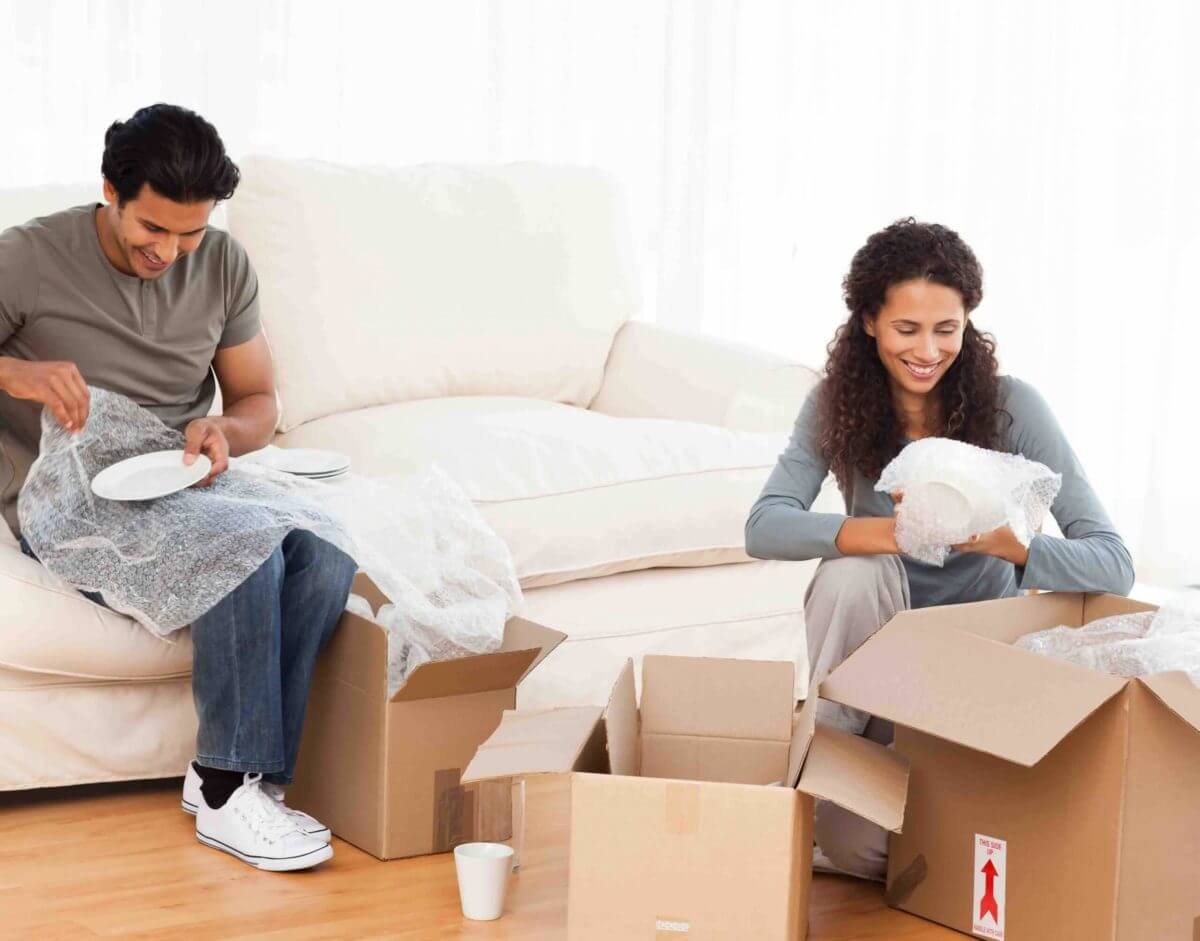

Additional Essential Tips on How to Pack Plates for Shipping With a Cross-Country Moving Company
Tackling the interstate moving process on your own is not a joke, and every advice and tip can come in handy, especially when you are handling breakable objects. Check out some additional boxing-up tips that will make the whole process go faster and smoother:
- If you run out of the carton, you can use buckets to stack plates, they are perfectly round shape, and they are sturdy enough to keep the delicates safe.
- Buy styrofoam and use it as a barrier between two delicate dishes, then wrap everything tightly and put it in crates. Styrofoam will absorb all the vibrations, and it will prevent objects from cracking or breaking.
- Don’t forget to label every crate with “this goes up” besides writing fragile on it.
- Each plate should be wrapped separately and then bundled with 4 or 5 others.
Keep in mind that handling breakables during the relocation process can get pretty stressful. That’s why many people opt for professional help. Movers will not only bring all the necessary materials, but they will also use them in the most efficient way, maximizing the protection of your belongings. If you are considering using a storage service, they will also ensure that your stuff is boxed up in a way that it can stay put for a while without being damaged by external factors.


How to Load Truck Correctly When Moving Cross Country with a long distance moving company
Moving cross-country on your own means you get to not only bundle and box up all things in your home on your own but also that you will have to load the truck. One of the essential moving day tips when it comes to handling your crates is to do it slowly and with utmost care.
The last thing you will want is to bump the box and break valuables before the drive has even started. That’s why when the truck is parked, you should start loading it with heavier containers first. Put the ones with plates on the floor because they are heavier, and they won’t move around during the drive. Also, if you are relocating furniture like desks and tables, place the containers with breakable objects underneath them. Their sturdy buildHow to Load Truck Correctly When Moving Cross Country With a Long Distance Moving Company will protect them further during transit.


Overall Should You Pack Dishes on Your Own or Hire Cross Country Movers to Do It for You
Let’s be realistic – when you are moving across the country, there will be plenty of things to do. From figuring out the relocation budget and organizing important papers like medical records to packaging fragile items and making a household inventory list, you’ll have your hands full. That’s why, before deciding to DIY the packaging process, consider hiring a long-distance moving company to do it for you.
DIYing has its perks since you will be able to reduce your overall relocation costs and do everything at your own pace, but it can also be time-consuming and tiring. If you have some valuable but breakable objects that need extra protection during the relocation, consider letting professional state to state movers handle them with care. While the crew from the cross country moving company is doing all the grunt work, you can kick back, relax, and enjoy stress-free relocation.
FAQ
What Is the Best Way to Pack Plates for a Move?
When packing plates for a move, the best way to ensure they don’t break during transit is to individually wrap each plate in bubble wrap or packing paper, and then place them vertically in a sturdy box. Layer the plates with bubble wrap or packing paper in between, and fill any remaining space in the box with additional packing material, such as packing peanuts or crumpled paper. Label the box as “fragile” and “upward orientation” to help movers handle the box with care. It’s important to avoid overpacking the box with too many plates, as this can increase the risk of breakage. By following these steps, you can safely pack and transport your plates to your new home.
Should I Pack My Plates in a Box or Other Container?
It’s best to pack plates in a sturdy cardboard box that’s specifically designed for moving. These boxes are often called “dish pack boxes” or “dish barrels” and are designed with extra thickness and support to protect fragile items like plates during transit. While it may be tempting to use other containers, such as plastic bins or bags, they may not provide adequate protection for your plates and can increase the risk of breakage. Cardboard boxes are also stackable, making them easier to move and transport, and are usually available in a range of sizes to accommodate different plate sizes and quantities.
If you’re having trouble finding the right boxes, you can purchase them from moving supply stores or online retailers, or ask your cross-country moving company if they can provide them.
How Many Plates Can I Pack In One Box?
The number of plates you can pack in one box will depend on the size of the box and the size of your plates. Generally, it’s best to pack plates in smaller quantities to avoid overpacking the box and potentially increasing the risk of breakage. A standard dish pack box can typically hold around 8-12 plates, depending on the size of the plates and the amount of cushioning used between each plate. It’s important to avoid overpacking the box with too many plates, as this can cause the box to become too heavy and increase the risk of breakage.
When packing plates, be sure to use enough cushioning, such as bubble wrap or packing paper, in between each plate to help prevent them from moving and potentially breaking during transit. It’s also a good idea to label the box as “fragile” and “upward orientation” to alert movers to handle the box with care.
What Materials Do I Need to Pack My Plates?
To pack your plates, you’ll need the following materials:
- Dish pack boxes: These are sturdy cardboard boxes designed for moving, with extra thickness and support to protect fragile items like plates.
- Packing paper or bubble wrap: These materials are used to wrap and cushion each plate, preventing them from moving and potentially breaking during transit. You’ll need enough paper or bubble wrap to cover each plate individually.
- Packing tape: This is used to secure the packing paper or bubble wrap around each plate, as well as to seal the box once it’s packed.
- Marker: You’ll need a marker to label the box as “fragile” and “upward orientation” to alert movers to handle the box with care.
- Optional: Packing peanuts or crumpled paper can be used to fill any remaining space in the box and provide additional cushioning.
Make sure you have enough of each material on hand before you start packing, and consider purchasing extra supplies just in case. By using the right materials and taking the time to pack your plates carefully, you can help ensure they arrive safely at your new home.
Can I Pack My Plates With Other Dishes and Kitchen Items, or Should I Keep Them Separate?
It’s best to pack plates separately from other dishes and kitchen items to prevent them from rubbing against each other and potentially breaking during transit. Plates are typically flatter and more fragile than other items like bowls or cups, so they require extra care when packing. If you do need to pack other dishes and kitchen items in the same box as your plates, be sure to separate them with cushioning materials such as packing paper, bubble wrap, or foam sheets. Make sure to pack heavier items at the bottom of the box and lighter items on top, and fill any remaining space in the box with packing material to prevent items from shifting or moving during transit.
How Do I Prevent My Plates From Getting Damaged During the Move?
When you are moving to a new place, it is important to ensure that fragile items such as plates are well protected to avoid damage. One way to prevent your plates from getting damaged during the move is to use sturdy boxes that can support the weight of the plates. Additionally, wrap each plate individually in bubble wrap, packing paper, or cloth to provide extra cushioning and prevent them from bumping into each other. Use dividers or packing peanuts to keep the plates from shifting and sliding inside the box. Label the box as “fragile” and indicate the contents to avoid mishandling during transit. With these precautions, you can protect your plates and other fragile items during the move and arrive at your new home with your belongings intact.
Should I Stack My Plates Vertically or Horizontally in the Box?
When packing plates for a move, it is generally recommended to stack them vertically in the box. This means placing each plate on its edge as if it were in a dish rack. Stacking plates horizontally can put too much pressure on the lower plates and increase the risk of breakage, especially if the plates are heavy.
By stacking the plates vertically, you can distribute the weight more evenly, and reduce the risk of damage during the move. You can use dividers or packing paper to separate each plate and prevent them from touching and potentially chipping or scratching each other. Remember to fill any empty spaces in the box with packing material like bubble wrap or packing peanuts to keep the plates from shifting during transit.
Should I Use Bubble Wrap or Newspaper to Wrap My Plates?
When packing plates for a move, it is recommended to use bubble wrap over newspaper to wrap them. While both materials can provide cushioning to protect the plates, there are some drawbacks to using newspaper. Newspaper may not provide enough padding to protect the plates from damage, especially if they are heavy. The ink from the newspaper can also transfer onto the plates and leave stains that are difficult to remove. In addition, newspaper may not be as effective at absorbing shocks and vibrations during transport, which can lead to damage.
On the other hand, bubble wrap is designed to provide excellent protection for fragile items. The small air pockets in the bubble wrap create a cushioning effect that can absorb shocks and vibrations during transport, helping to protect the plates from damage. Bubble wrap is also easy to use and does not leave any residue or stains on the plates.
What’s the Best Way to Label My Plate Boxes?
Properly labeling your plate boxes during a move can help ensure that they are handled with care and avoid damage. The best way to label your plate boxes is to clearly indicate that they contain fragile items. Write “Fragile” in bold letters on the top and sides of the box, so that the label is visible from all angles. It’s also helpful to indicate the contents of the box, such as “Kitchen plates” or “Fine china,” to help movers know what is inside. Use a dark, waterproof marker or printed labels that are easy to read. Additionally, consider marking the boxes with arrows pointing upwards to indicate which side should face up during transport. By following these labeling tips, you can help ensure that your plates arrive at your new home in good condition.
Should I Hire a Professional Moving Company to Pack My Plates for Me?
Hiring a professional cross-country moving company to pack your plates and other fragile items can be a good option if you want to ensure that they are properly protected during the move. Professional cross-country movers are trained to pack and transport items safely, and they have the experience and equipment needed to handle fragile items.
If you are not experienced in packing delicate items, or if you are worried about damaging your plates during the move, hiring professional packers may be a good idea. Professionals will use high-quality packing materials such as bubble wrap, packing paper, and foam, to ensure that your plates are adequately cushioned and protected. They will also use sturdy boxes and label them clearly to ensure that your plates are handled with care.
